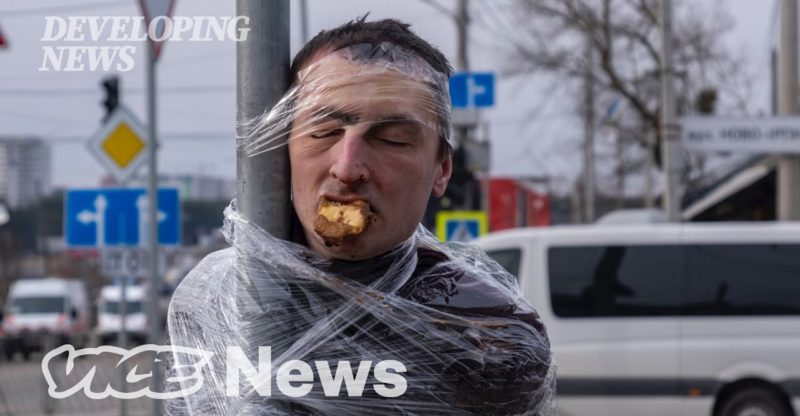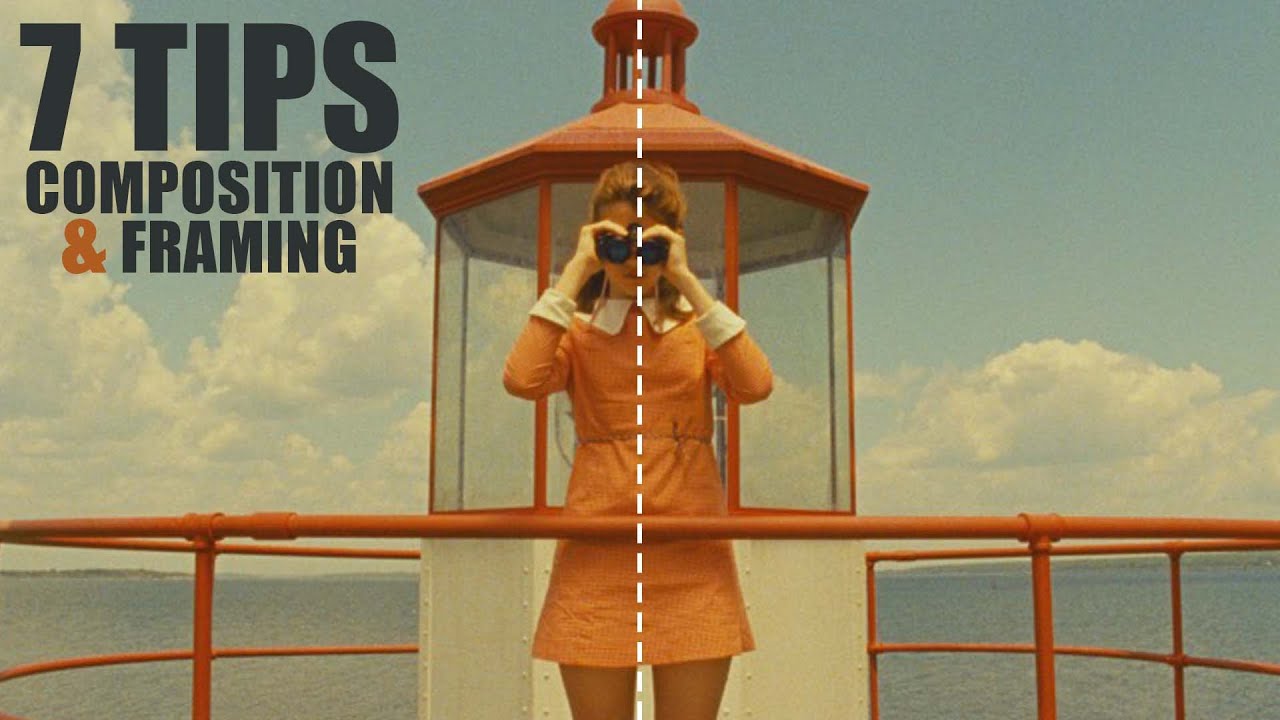“They Tie Them Up To a Pole” | Developing News
I hear this noise, and I look up, and Harush comes flying out of a window on the second or third floor of the building and lands at my feet. And, incredibly, survives the fall. One of the soldiers goes up to him with a bottle of water. They douse him with the water. They say, “We’ve just baptized you.” And I was able to photograph all this. [DEVELOPING NEWS] My name is Ron Haviv. I’m a freelance photographer. I’m the co-founder of the Seven Photo Agency and the Seven Foundation. So Russia decided to invade Ukraine on February 24th, 2022, and the war continues to this day, fighting with this idea of saving Ukraine while protecting Russia.
So this is a photograph of Ukrainian military in one of these very key towns. And whoever controlled this town will control both roads that lead to Kyiv. And so here you’ll see that there are bodies in the background. These are dead Russian paratroopers, the elite Russian forces that were defeated when the Ukrainians retook this town. And here, the Ukrainian soldier is looking through his scope at the Russian forces, who are basically 100 meters away, so they’re that close. The losses on the Russian side were quite remarkable. So in many places that you would go, you would see dead Russian soldiers, which, one, was incredible that they were leaving their dead behind, and two, that so many Russian soldiers were being killed by Ukrainians. So this is a looter, but a Ukrainian looter who has been arrested by Ukrainian forces. And they tie them up to a pole. They often take their pants off, their underwear off to humiliate them. They stick a potato in their mouth to show that they're stealing.
And the soldiers that tied him up said that the police would eventually come to arrest them and put them on trial. He's allegedly a perpetrator, allegedly a looter. I have no idea if that’s correct or not. But he’s also a victim of the whole situation that’s going on. So here we see a scene from the Kyiv central rail station. This is Alona with her child. Just as the door is closing, she’s looking at her husband, who’s standing right in front of me, saying goodbye. Often, women and children are being sent to safety, and the men are staying behind to either continue their normal job or to join the military and fight to defend the country.
And this scene is being repeated every day, over and over again, in all different parts of Ukraine. And that is an incredibly difficult thing to emotionally accept, breaking up of families, people being forced out of their homes. In 1991, the world was changing. The Soviet Union had fallen. And I read an article about this place called Yugoslavia, which I didn't really know much about. But there was also rumblings of this idea about nationalism, and possibly the country would start breaking apart. And if it did so, it would break apart violently, perhaps causing the first war in Europe since World War II.
I spent more than five years documenting each violent episode that happened on the ground. So this photograph is from Vukovar in the two to three days of the fall of Vukovar. And here, in this very surreal photograph, there’s a building burning. You have an older man on a bicycle. The uniform he’s wearing is a World War II uniform. The weapon is an old hunting rifle. And he’s holding up the symbol with three fingers, which is the Serbian sign for the Father, the Son, and the Holy Ghost, very much associated with the Serbian side throughout all the different conflicts. It’s unclear exactly what was going on in this particular situation. The primary thing was just basically cleansing the town of all Croatians by Serbian forces. I had already been covering the breakup of Yugoslavia for a number of months, and I had been seeing all sorts of remarkable things, surreal things.
And this guy coming down on a bicycle with a three finger salute, with a burning house at this point seemed actually par for the course. It just seemed completely normal. And that really kind of, in some ways, encapsulates what the war in Croatia was like. So throughout all the different wars in the breakup of Yugoslavia, there are these very dramatic characters who had huge impact on what was going on on the ground. And one of these was a man called Arkan, who was a Serbian paramilitary leader. So he was the head of this paramilitary unit that started fighting during the war in Croatia. And so one day, myself and a French photographer, a woman named Alexandra Boulat, we went to visit him to ask for permission to go on his next mission. Before we left, we said, “Can we take a portrait of you?” And he immediately got all his men to go out into the courtyard, where there was a military vehicle, and he stood there proudly in front of the men.
And we’re about to take the photograph, somebody comes running up and hands him this baby tiger. And he said, “Oh, yes, we just liberated,” “liberated,” “this tiger from a Croatian zoo, and now he’s our mascot.” And I took this photograph of him holding the tiger with his men, which he really liked, and it became a very emblematic photograph of him because he became notorious not only for his fighting, but also because these men were very brutal—executing civilians, looting, stealing. And I wound up running into them again in the war in Bosnia. And so this photograph here is a man named Harush Ziberi, and he's been taken prisoner.
Arkan arrived with his troops, the Tigers. And Arkan jumps out of the bus, and he says, “I’m here to liberate this town of Muslim fundamentalists.” I went up to Arkan, and I said– introduced myself or reintroduced myself. And he was like, “Oh yeah, I remember you. Thank you for the picture.” And I said, “Can I go with your troops?” So he sent me off with a unit that basically made their way through town looking for Muslim fighters, and they had found Harush Ziberi hiding in the mosque. And they said to me, “Look, we found some pistols in the mosque. They must be his, so we’re arresting him.” And so I went to take a photograph of Harush, and they threw him down to the ground. And he’s basically putting his hands up to me to help him. And I can’t convince them, obviously, to release him. But I wanted to make sure that they knew that I was photographing him with them, that there was evidence. Then we go back to a house which they had taken over.

And at this point, I wanted to leave because I knew I had photographs of the executions, I had photographs of Harush being taken prisoner, and I needed to get the film physically out of there in order for it to be developed and eventually seen. They said, “Oh, no, you can’t leave. You have to wait for Arkan to come back.” And while we’re waiting, [I] hear this noise. And I look up, and Harush comes flying out of a window on the second or third floor of the building and lands at my feet, and, incredibly, survives the fall.
One of the soldiers goes up to him with a bottle of water. They douse him with the water. They say, “We’ve just baptized you.” And I was able to photograph all this. Moments later, Arkan arrives. At this point, I know I’m going to lose the film that’s in the camera, but I had already hidden film in the car while I was waiting for Arkan to arrive. So the film of Harush coming out of the window and so on, I had to give to Arkan.
And I was able to basically get in my car, drive straight to the airport, and send my film to be developed. It took 12 years to identify him in a river by DNA. The photograph was used as evidence for war crimes against Arkan and his men and also alerted the world to what was happening. The family felt that the photograph meant something to them, and I think that for myself, personally, being absolved in some way, even though I do still feel guilty, it means an incredible, incredible amount for me. So they announced that there was going to be a rally on January 6th, and nobody knows exactly what's going to happen. And then the president says, “I’m going to go to the Capitol with you.” Well, I think that this photograph represents the complete chaos of what’s going on.
You essentially have two policemen who are getting sprayed smashing into each other in kind of this sort of dance. While in the background, you have this very strange character— there’s this guy with a cowboy hat with what appears to be an ax handle with an American flag. See the scaffolding that’s there for the inauguration in the background already completely being controlled and used by the Trump supporters to move closer to the physical building.
This is really a scene of just continuous chaos and people not really knowing what to do. Once the pro-Trump people were inside, they’re kind of like, “So what do we do now?” And they’re like, “OK, well, let’s go this way,” or, “Let’s go that way.” And so a group of them kind of ran down a hallway, and they were confronted by this guy named Officer Goodman. Eventually they start to make their way up the stairs.
So I follow behind the Trump supporter, who you see here in the foreground. And Goodman here now is taking out basically like a baton and is trying to defend them from going forward. I think his main goal was just to delay them to give the politicians time to be able to escape because they’re basically right around the corner from Senator Mitt Romney and other senators, and other people are right behind them. The vice president is being taken out around this time. So Goodman is really single-handedly stopping this group of Trump supporters from getting into a place where they’re going to be able to physically confront the people that they wanted to confront. Well, you see here the famous shaman. And what I really thought that this photograph captured the best was because kind of all of a sudden, it seems like he realizes where he is. And he’s kind of looking around in amazement, like, “Oh, I’m in the Capitol. I’m in Congress, and I’m dressed like this, acting like this. And say, what exactly is going on here?” Kind of bewilderment/ amazement/respect, plus the purpose of why he’s there— to protest the affirmation of the election.
And, you know, there was a lot of these kind of little surreal scenes that were happening in various places in the Capitol. I think that photography and photojournalism specifically can have a real role in having impact. The photographs that I take cannot exist in a vacuum. They have to work together with what you as the viewer, what will you do with the knowledge that you gained from these photographs. And then it’s together, together, the work can be part of a chain that hopefully will impact the world for the better..













